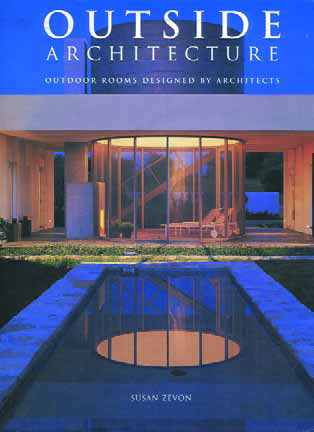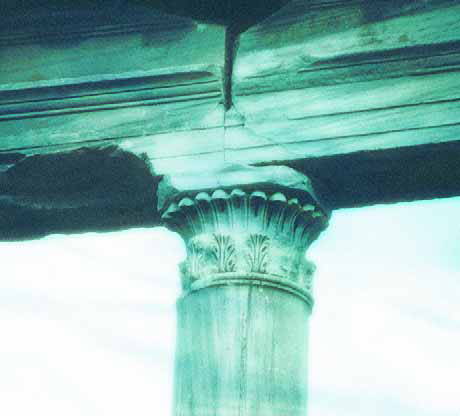inspiration
From the start, it's been a project that has taken its direction from the art, spirit and cultural heritage of the clients and has always been much more to me than just another opportunity to design an attractive backyard and swimming pool. I've always gravitated toward work that lets me treat spaces with a sense of spirituality and a respect for the energy and sanctity of nature that ultimately will resonate with clients beyond the purely visual and functional aspects of the design. Often, those qualities are expressed in subtle ways that I end up appreciating more than my clients, but in the case of the project seen here, there was a joy and ease to the work because the clients shared my sensibilities. As a result, the work
One of the themes that weaves its way through a great many of the articles and columns we've run in WaterShapes through the years turns on the thought that watershape design
Since the dawn of civilization, it has stood as the single most enduring of all artistic media: From representations of mythological characters and historic events to applications as purely architectural forms and fixtures, carved stone has been with us every step of the way. As modern observers, we treasure this heritage in the pyramids of Egypt and Mesoamerica. We see it in the Parthenon in Athens, in the Roman Colosseum and in India's Taj Mahal - every one of them among humankind's finest uses of carved stone in the creation of monuments and public buildings. As watershapers in particular, we stand in awe before the Trevi Fountain in Rome, the glorious waterworks of the Villa d'Este and the fountains of Versailles, three of history's most prominent examples of carved stone's use in conjunction with water. But you don't need to
"True form is always organic in character." -- Frank Lloyd Wright I never studied Frank Lloyd Wright in school, but I've been intrigued by his work and design philosophy for years and had long intended to fill this gap in my education on my own. But that's proved to be easier said than done because of the huge number of books about him: There are simply so many of them that I never knew where or how to start. This dilemma came to an abrupt end when I ran across a book written in Wright's own hand. That book, An American Architecture, was first published in 1955 by Horizon Press and was reissued by Barnes & Noble in 1998. Edited by Edgar Kaufmann, the text is a compilation of Wright's notes, speeches and lectures spanning
It's a wonderful coincidence and a rare opportunity: From October 30 through November 3, the American Society of Landscape Architects will hold its 2003 meeting and exposition in New Orleans, followed the next day - in the very same city and in the very same convention center - by the
Amazing things can happen when great architects think beyond the walls and tackle exterior design as part of their projects. That's a message that comes through loud and clear and repeatedly in Susan Zevon's Outside Architecture (Rockport Publishers, 1999). Throughout the book's 190 generously illustrated pages, she covers the work of 18 architects - using multiple examples from each while focusing not so much on individual projects but rather on key features, styles and design philosophies that cut across the range of the fine work on display. About three quarters of the projects are residential and range stylistically from classic to modern at locations scattered across the United States and Mexico. Nearly all of the architects were new
For the most part, the designers and builders of pools, spas and other watershapes visualize their projects in full sun, install them during daylight hours and seldom (if ever) see them after the sun goes down. That's both a problem and a shame, and it's reflected in the fact that the run of projects you encounter by mainline pool-industry folks - and, to a lesser extent, by people from the landscape trades - tend to treat the lighting of exterior spaces as an afterthought if it's really thought about at all. In fact, I'll go so far as to say that
I spent ten days this last December traveling in Turkey - my second visit to the country in the past several years and a trip that reinforced vivid memories of just how mind-expanding a place it is. The Greek, Roman, Byzantine and Ottoman empires all held sway over this patch of land at times during the past 2,500 years, and throughout that long history, these and other great civilizations of both East and West have made their marks on the place. Situated at the crossroads of land- and sea-trade routes between Europe and Asia, Turkey has vast, rich reserves to drawn upon when it comes to
In the premiere issue of WaterShapes in February 1999, Brian Van Bower's first "Aqua Culture" column invoked the name of winemaker Robert Mondavi, calling him a role model for watershapers everywhere. It was a partly surprising place to start a new column, given the fact that Mondavi is neither a contractor, engineer or designer, but Bower, a wine connoisseur as well as a trailblazing watershaper, made a good case for seeing Mondavi's career as a lens through which we might better understand our own. At the time, I didn't completely appreciate the connection between Mondavi and the watershaping trades, but I decided a bit later to pick up the book, Harvests of Joy, and spend some time with it. Prepared by Mondavi with writer Paul Chutkow, the 364-page book was published in 1998 by Harcourt Brace. I know that this is quite a departure from
"All art is but imitation of nature." -- Seneca *** It's wonderfully ironic that so many of the greatest expressions of human creativity and productivity are those that derive themselves wholly or in large part from





















